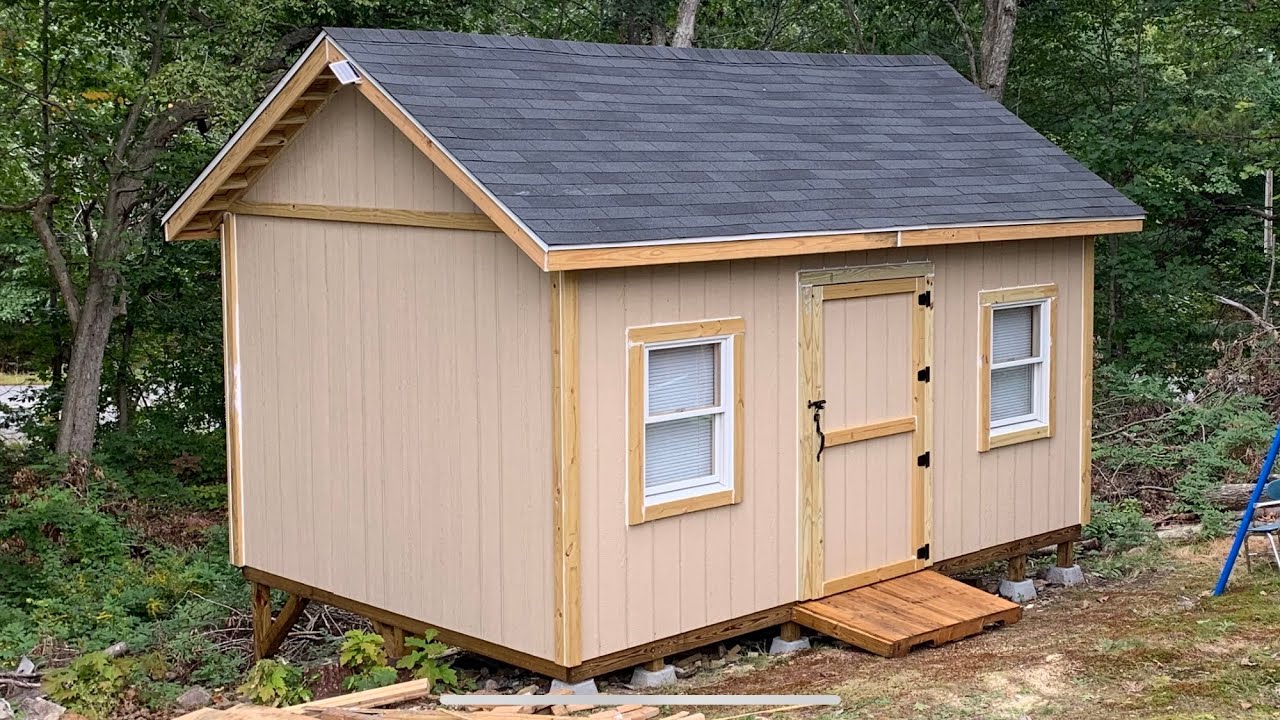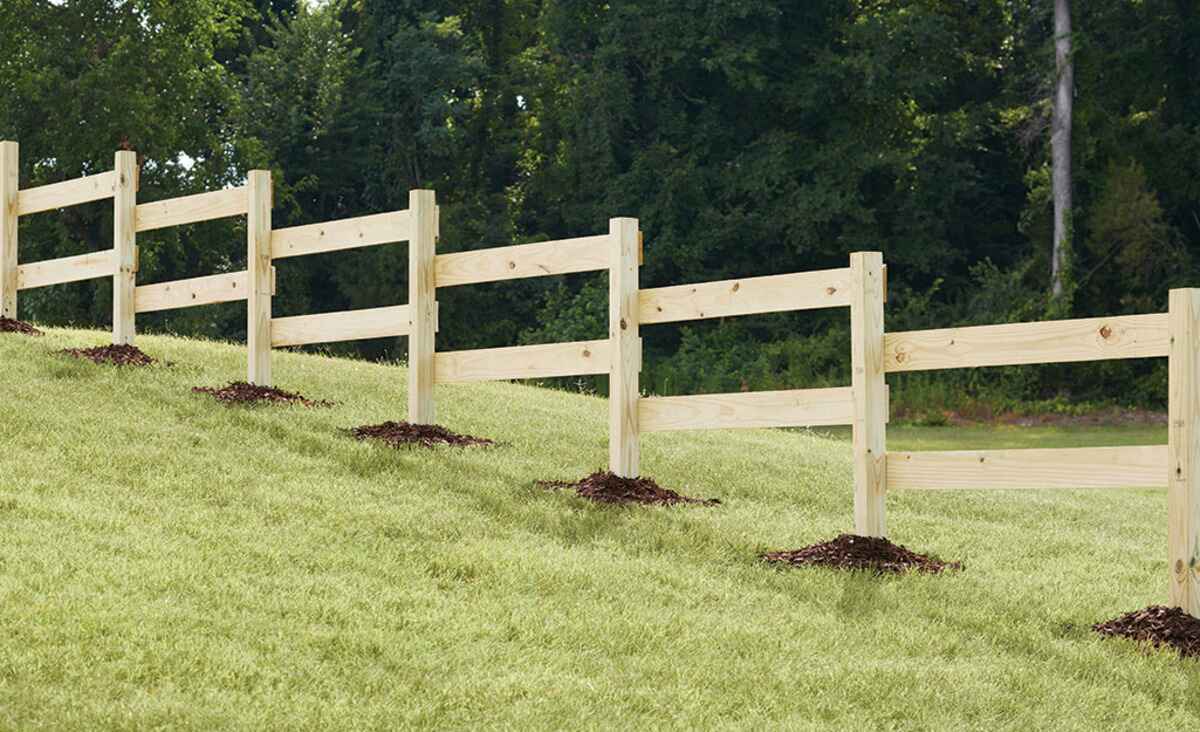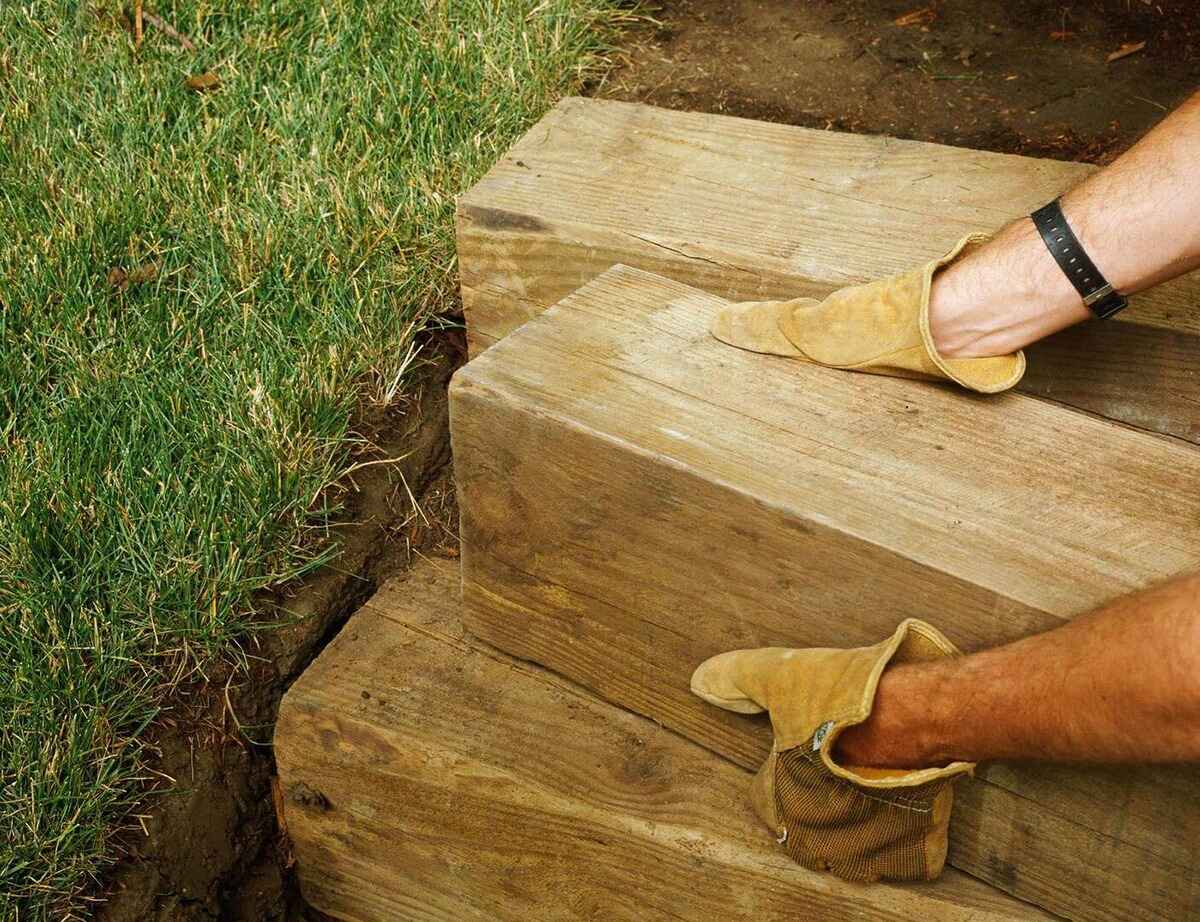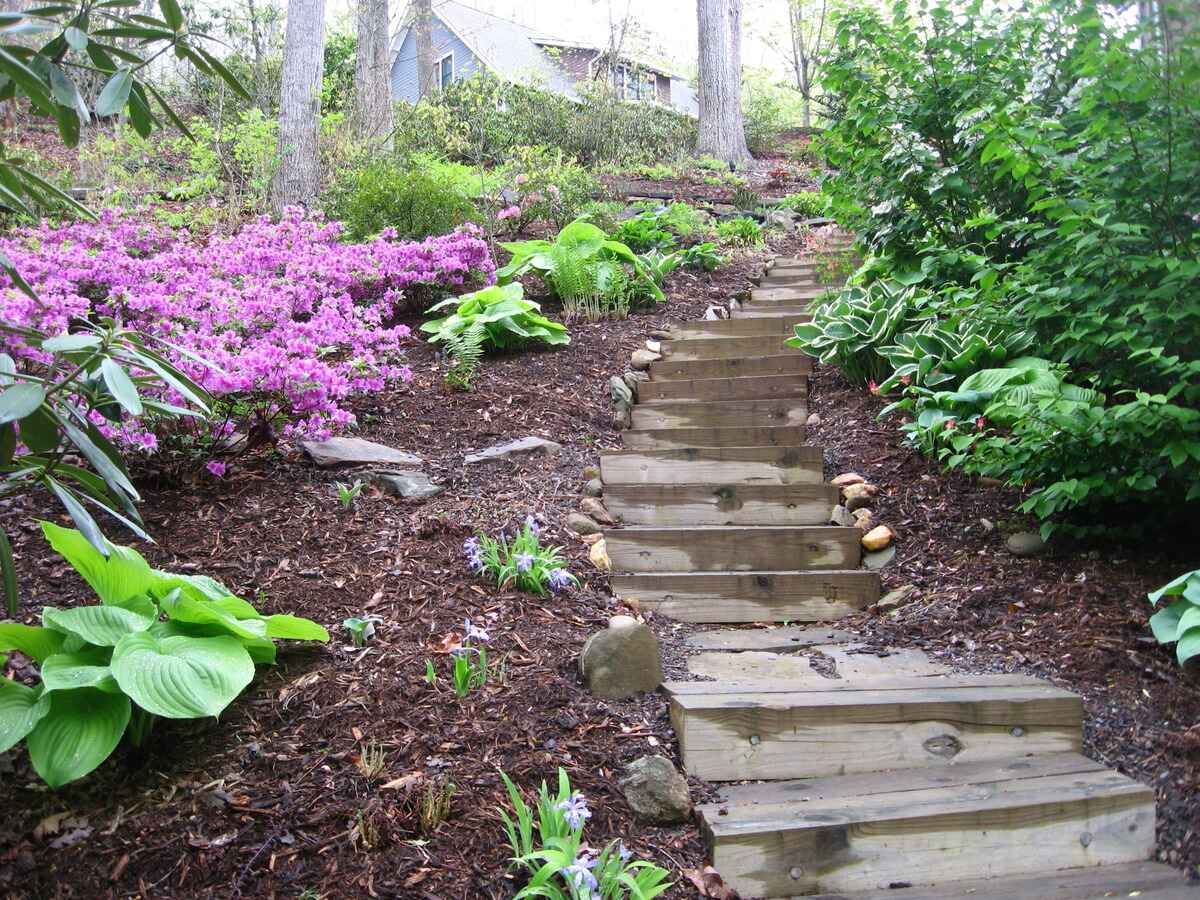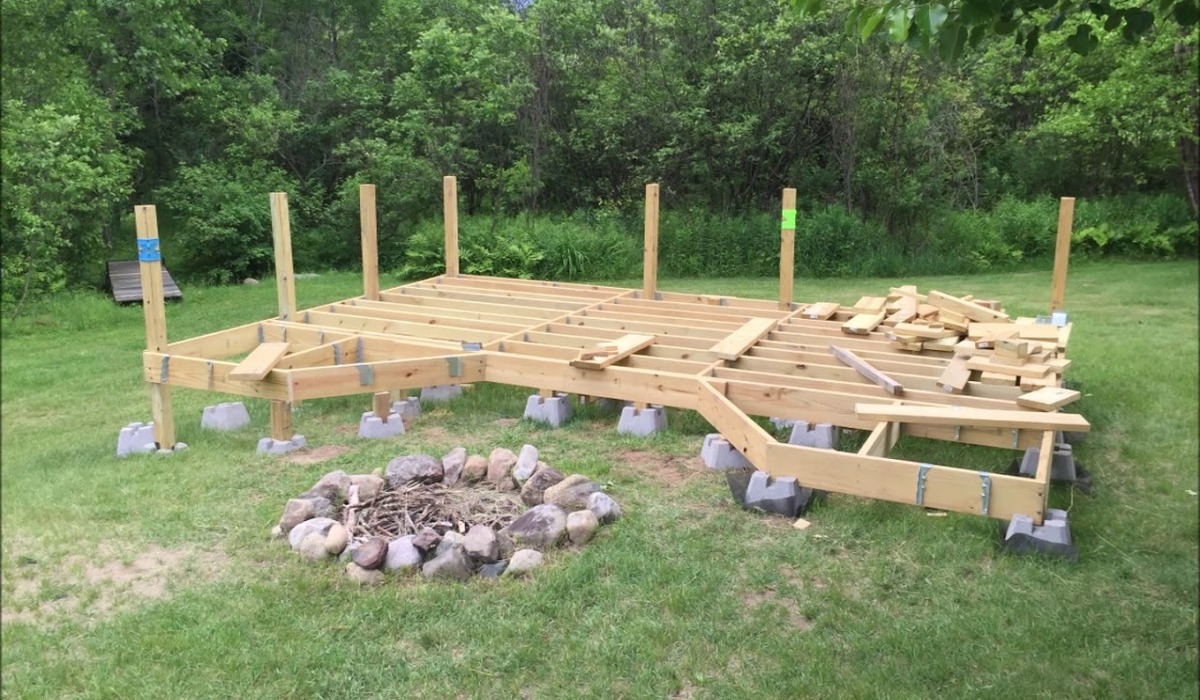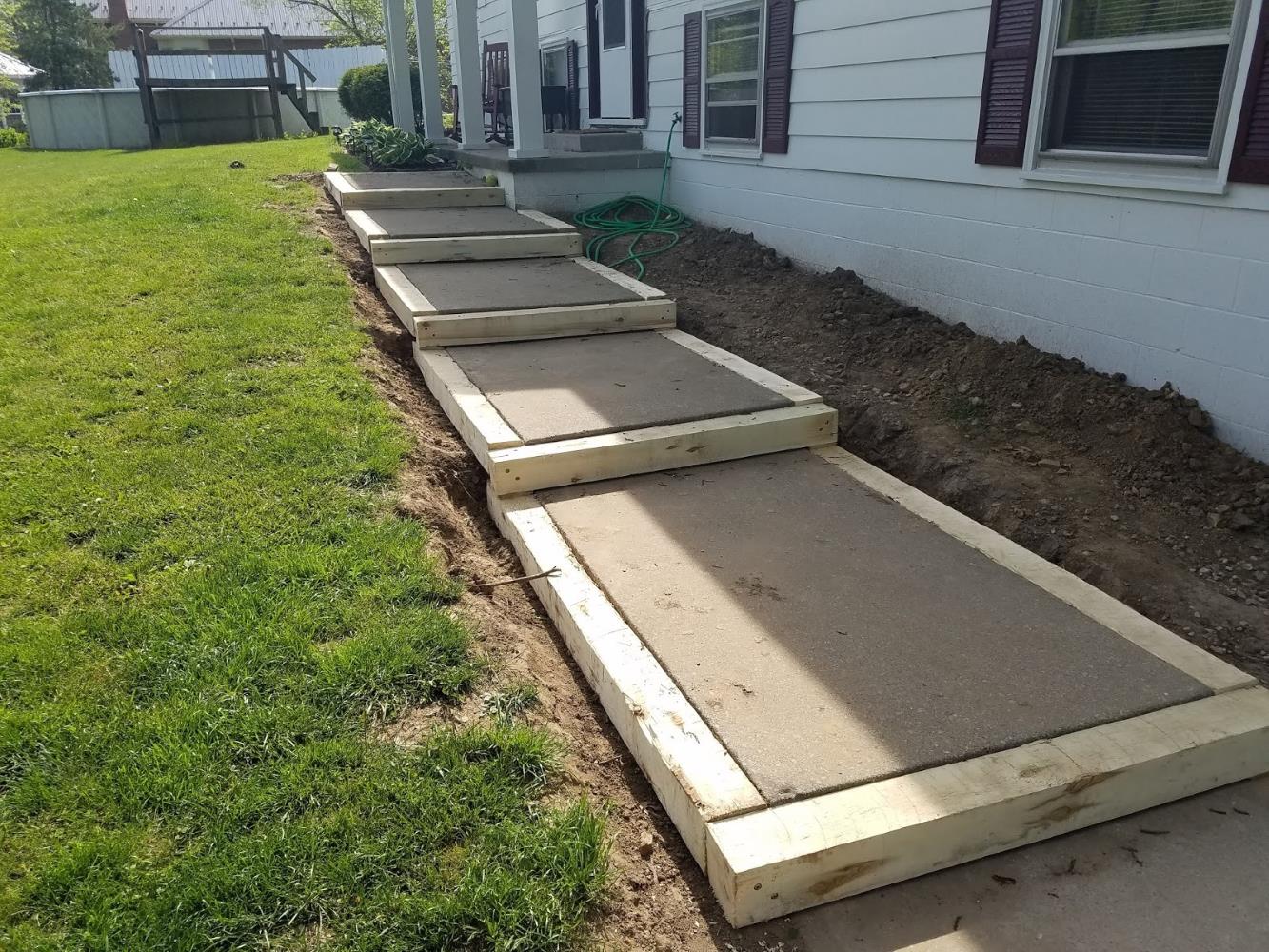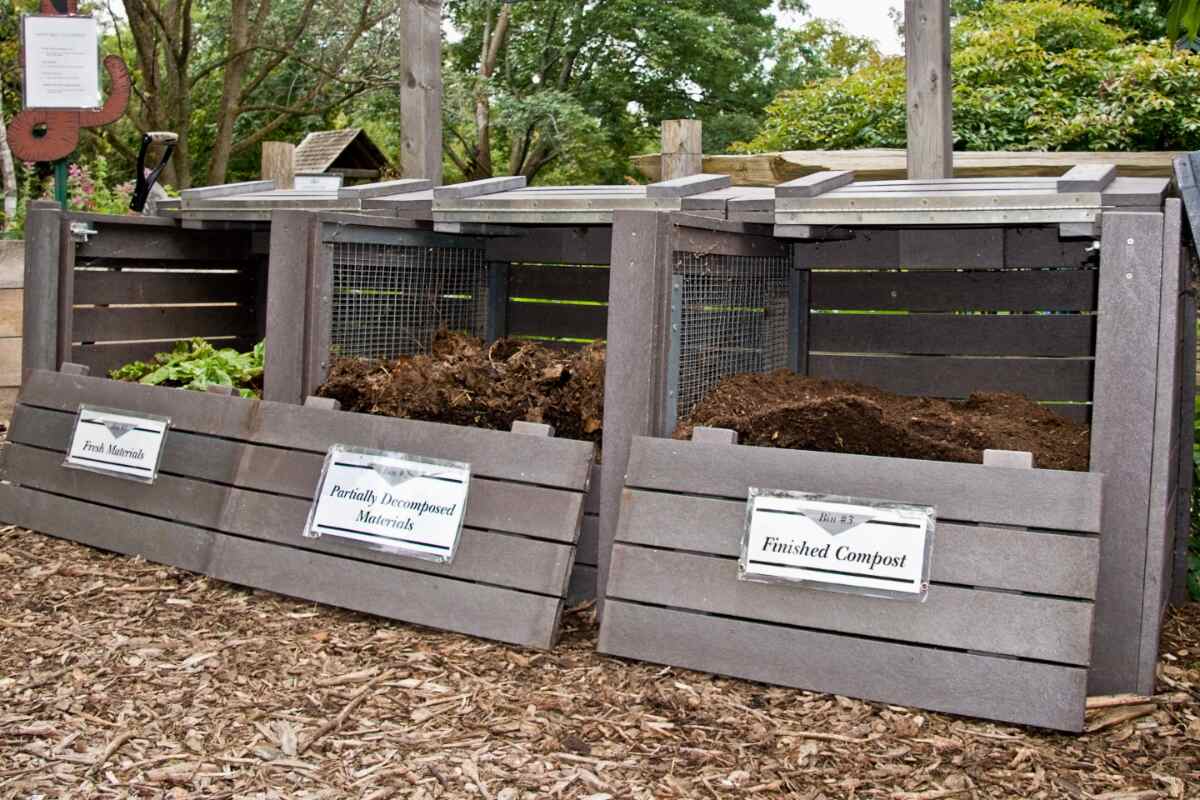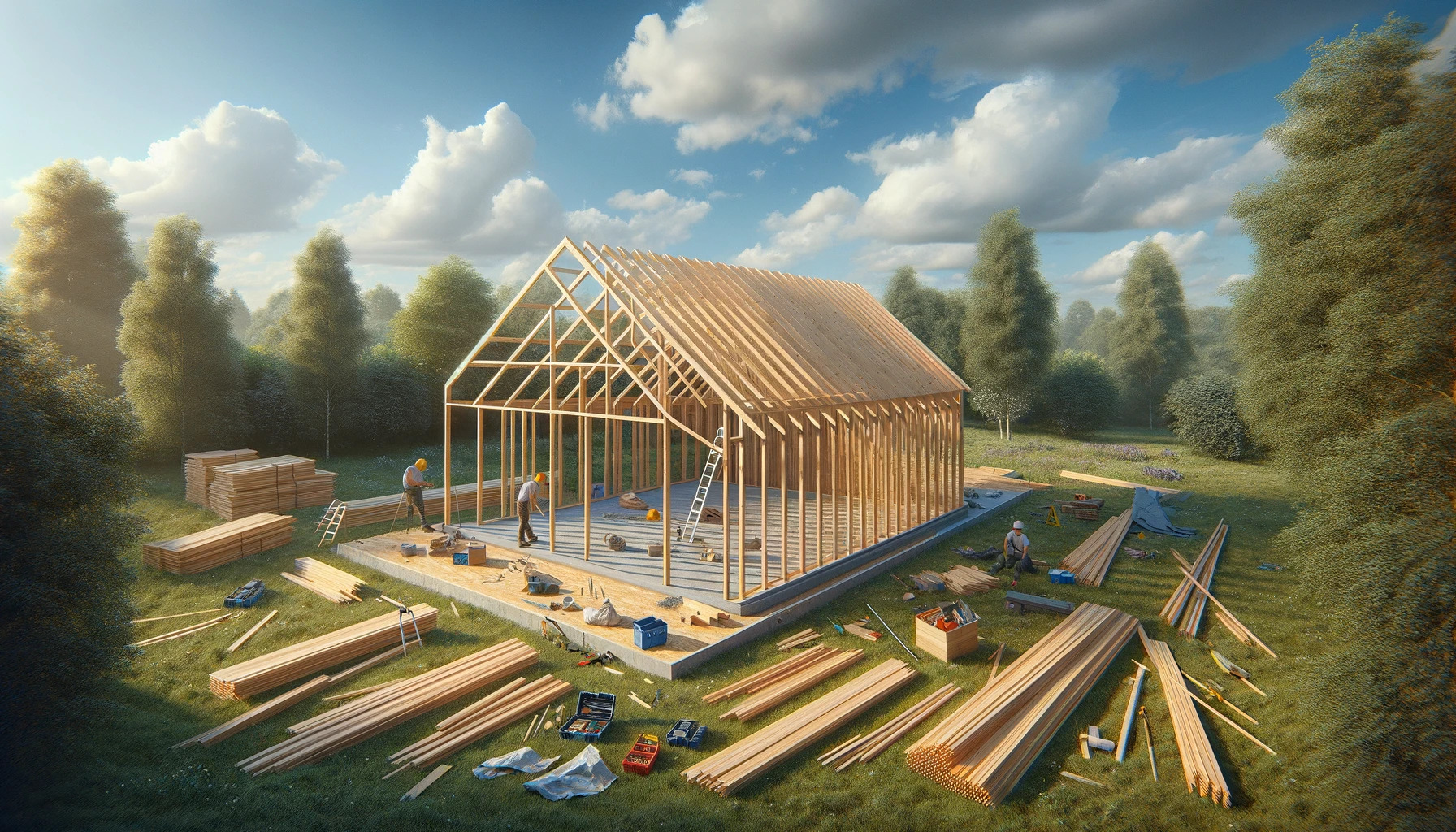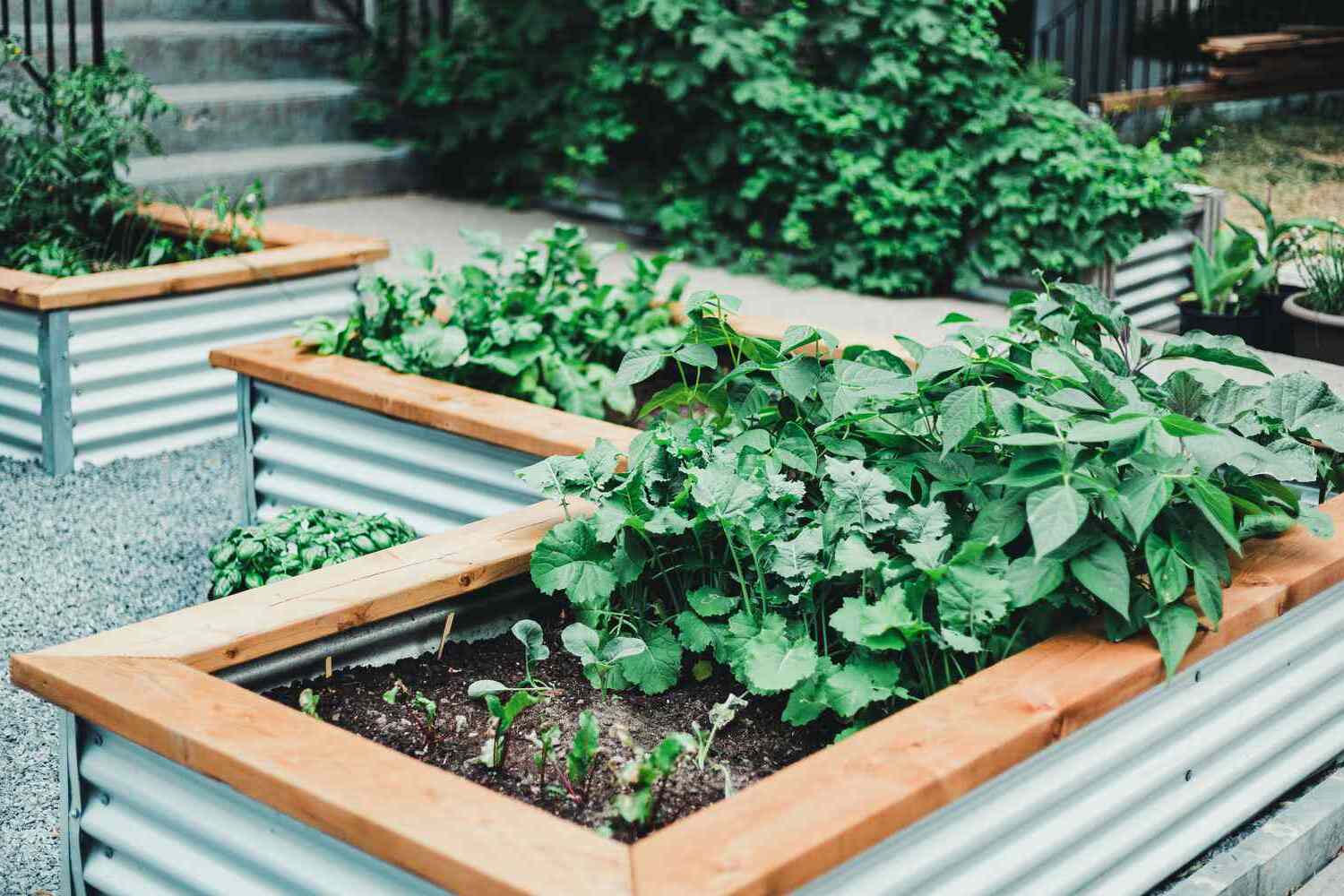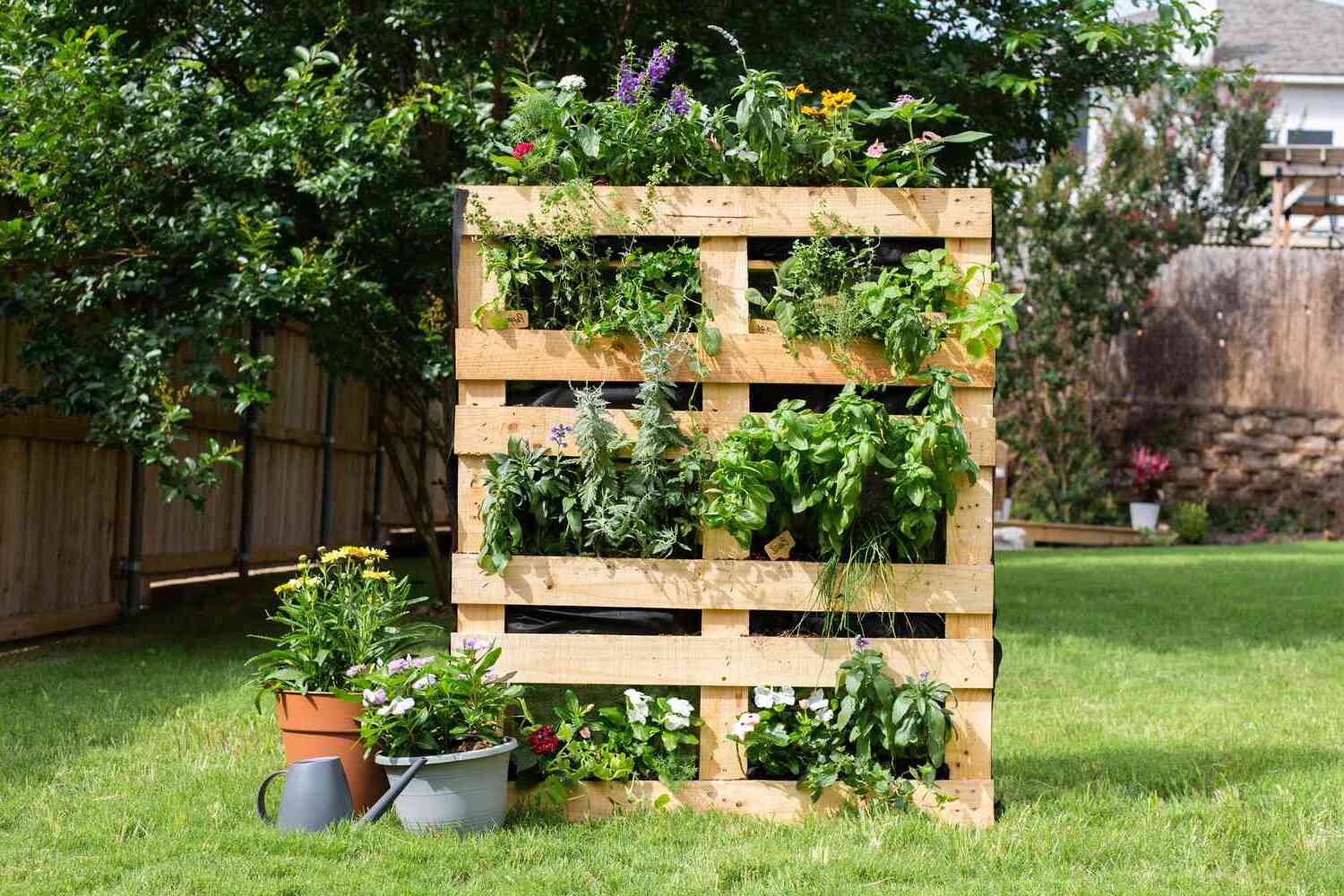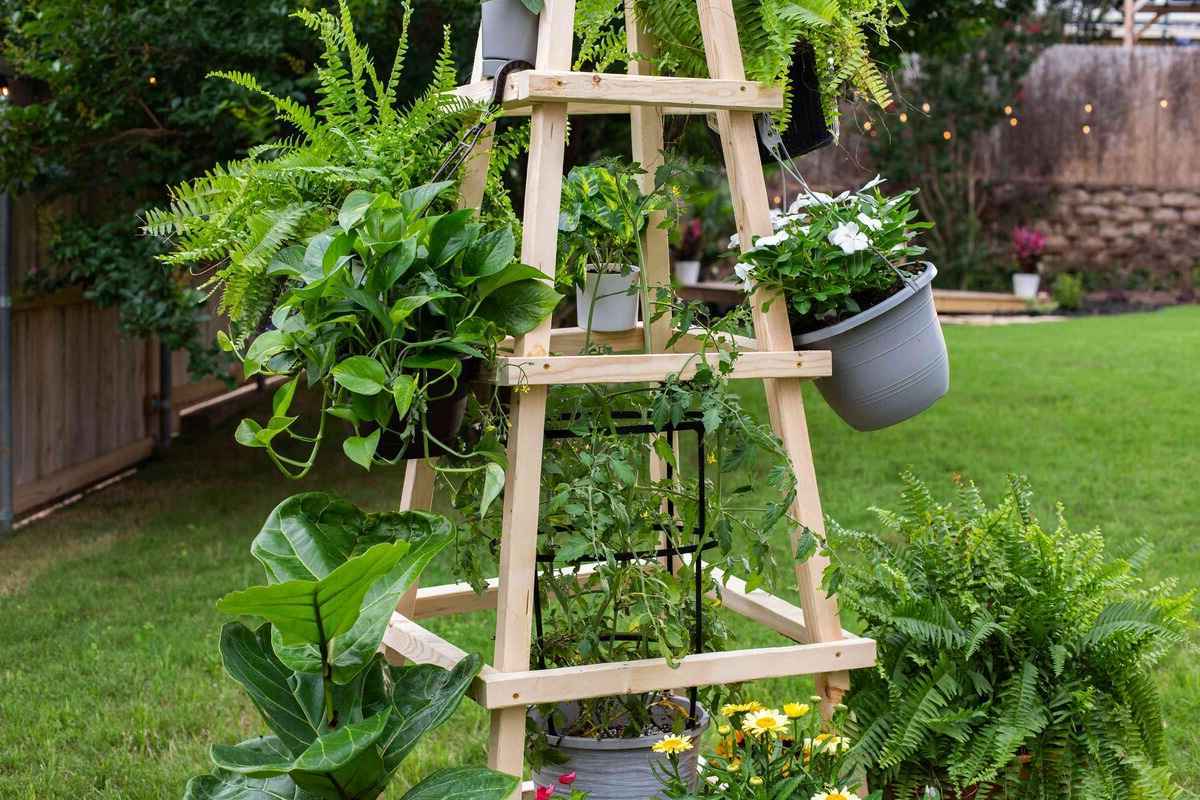Home>Outdoors & Camping>Landscaping>How To Build A Tiered Garden On A Slope
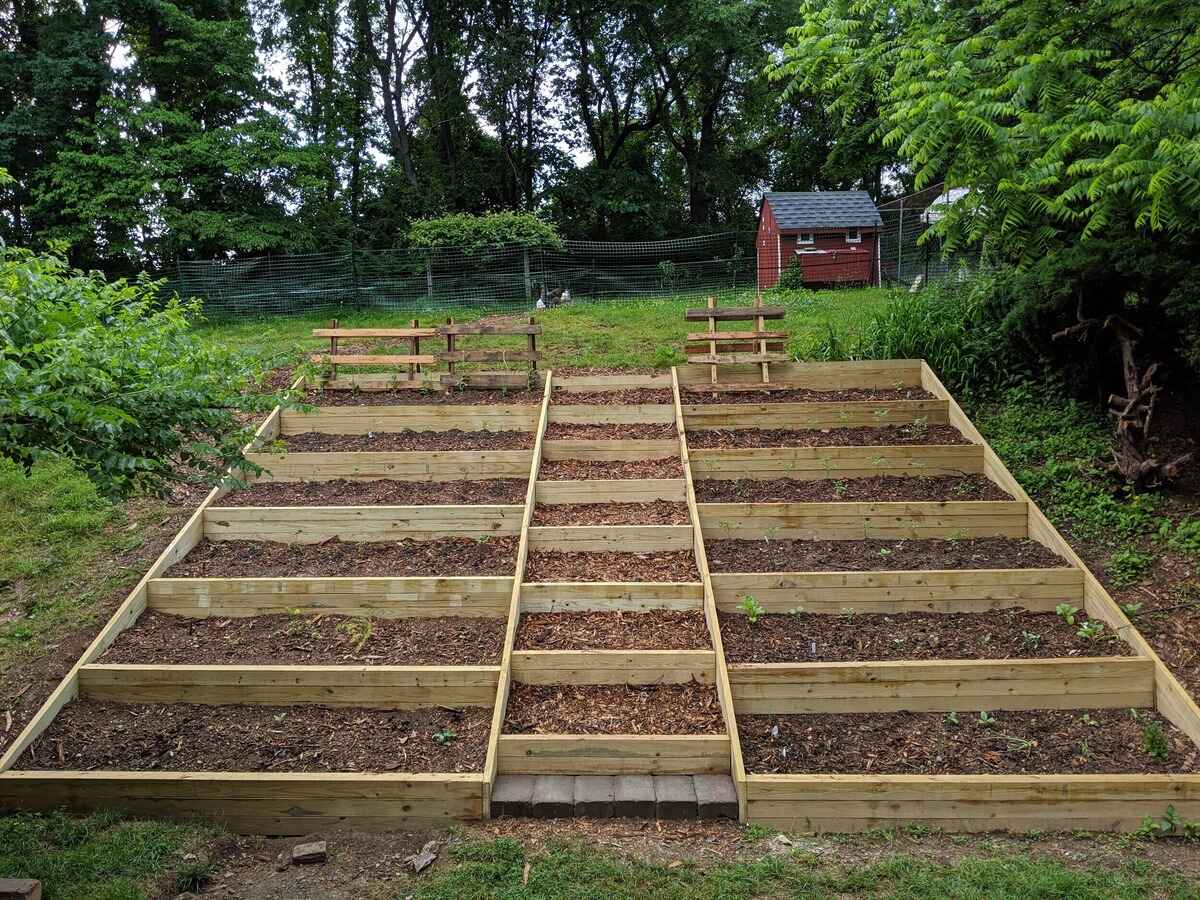

Landscaping
How To Build A Tiered Garden On A Slope
Published: March 7, 2024

Content Creator for Outdoors & Camping, Sophie turns any yard into a sustainable paradise. Her dedication to DIY outdoor projects and volunteer work in community gardens shares joy and knowledge.
Learn how to create a stunning tiered garden on a slope with our expert landscaping tips. Transform your outdoor space with our step-by-step guide.
(Many of the links in this article redirect to a specific reviewed product. Your purchase of these products through affiliate links helps to generate commission for Twigandthistle.com, at no extra cost. Learn more)
Introduction
So, you've got a sloped yard and you're wondering how to make the most of it? Well, building a tiered garden on a slope could be the perfect solution! Not only does it add visual interest to your landscape, but it also allows you to grow a wider variety of plants. Whether you're looking to create a lush flower garden, a productive vegetable patch, or a serene meditation space, a tiered garden can transform your steep terrain into a beautiful and functional outdoor oasis. In this article, we'll walk you through the steps to create your own tiered garden, from assessing the slope and soil conditions to choosing the right plants for each tier, building retaining walls or terraces, installing irrigation and drainage systems, and maintaining your new garden. Let's get started!
Assessing the Slope and Soil Conditions
Assessing the slope and soil conditions is the crucial first step in building a tiered garden on a slope. Here's what you need to do:
-
Measure the Slope: Use a long piece of lumber and a level to determine the slope's steepness. This will help you plan the number of tiers and the height of retaining walls or terraces needed.
-
Evaluate Soil Quality: Test the soil's drainage, fertility, and pH levels. Steep slopes can cause water to run off quickly, so it's important to ensure that the soil can retain moisture and nutrients. You may need to amend the soil with organic matter to improve its quality.
-
Observe Sun Exposure: Note the sun's path across the slope throughout the day. Different areas may receive varying amounts of sunlight, which will influence plant selection for each tier.
-
Consider Water Drainage: Determine how water flows down the slope during heavy rain. This will help you plan for proper drainage to prevent erosion and waterlogging.
By thoroughly assessing the slope and soil conditions, you'll be better equipped to design and build a tiered garden that thrives in its unique environment.
Choosing the Right Plants for Each Tier
When it comes to choosing the right plants for each tier of your tiered garden, it's essential to consider the specific microclimates and growing conditions of each level. Here's how to select the perfect plants for your tiered garden:
-
Top Tier (Upper Slope): The top tier typically receives the most sunlight and has the best drainage. Ideal plants for this area include sun-loving varieties such as lavender, rosemary, ornamental grasses, and drought-tolerant perennials.
-
Middle Tier: This area may receive partial sunlight and have moderate drainage. Consider planting a mix of flowering shrubs, such as hydrangeas, azaleas, and rhododendrons, along with shade-tolerant perennials like hostas and ferns.
-
Bottom Tier (Lower Slope): The bottom tier tends to have the most moisture retention and may receive less sunlight. Opt for moisture-loving plants like astilbes, ferns, Japanese maples, and bog-loving perennials to thrive in this environment.
-
Retaining Walls or Terraces: If you're incorporating retaining walls or terraces into your tiered garden, take advantage of the vertical space to grow cascading plants, such as trailing vines, cascading petunias, and creeping thyme. These plants not only add visual interest but also help soften the hard lines of the structures.
By carefully selecting plants that are well-suited to the specific conditions of each tier, you can create a diverse and visually stunning garden that flourishes throughout the growing season.
Building Retaining Walls or Terraces
Building retaining walls or terraces is a critical aspect of constructing a tiered garden on a slope. These structures not only create level planting areas but also help prevent soil erosion and manage water runoff. Here's a step-by-step guide to building retaining walls or terraces for your tiered garden:
-
Design and Layout: Begin by carefully planning the layout and design of your retaining walls or terraces. Consider the height and width of each wall, as well as the materials you'll use. Terraces are typically wider and more gradual, while retaining walls are narrower and steeper.
-
Choose Suitable Materials: Select durable and aesthetically pleasing materials for your retaining walls or terraces. Options include natural stone, concrete blocks, timber, or brick. Each material offers different aesthetic and structural benefits, so choose one that complements your landscape and meets your structural needs.
-
Prepare the Site: Clear the area where the retaining walls or terraces will be built. Ensure the ground is level and compacted to provide a stable foundation for the structures. If necessary, excavate the slope to create a more even surface for building.
-
Install Drainage: Proper drainage is essential for retaining walls and terraces. Incorporate drainage pipes or gravel behind the walls to redirect water away from the structure and prevent hydrostatic pressure from building up.
-
Build the Walls: Construct the retaining walls or terraces according to your design. Ensure that each layer is level and securely anchored to prevent shifting or collapse. Use appropriate backfill material and compact it in layers as you build to provide stability and support for the walls.
-
Add Finishing Touches: Once the walls are in place, add finishing touches such as capstones, coping, or planting pockets to enhance the visual appeal of the structures. These details can also provide functional benefits, such as creating seating areas or additional planting space.
-
Consider Professional Assistance: If you're dealing with a particularly steep or challenging slope, or if you're working with complex designs, it may be wise to consult with a professional landscaper or contractor to ensure the structural integrity and safety of your retaining walls or terraces.
By following these steps and paying careful attention to the design, materials, and construction of your retaining walls or terraces, you can create a sturdy and visually striking framework for your tiered garden.
Installing Irrigation and Drainage Systems
Proper irrigation and drainage systems are essential components of a successful tiered garden on a slope. These systems ensure that plants receive adequate water while preventing erosion and waterlogging. Here's how to install irrigation and drainage systems for your tiered garden:
-
Assess Water Needs: Evaluate the water requirements of plants in each tier based on their sun exposure, soil type, and moisture retention. This will help determine the type and frequency of irrigation needed for different areas of the garden.
-
Choose Irrigation Methods: Select appropriate irrigation methods based on the specific needs of each tier. Drip irrigation systems are ideal for delivering water directly to plant roots, while soaker hoses or micro-sprinklers can provide even coverage on terraced areas.
-
Plan Water Distribution: Map out the layout of your irrigation system, taking into account the slope and the location of plants. Consider the water pressure and flow rate to ensure uniform water distribution across all tiers.
-
Install Irrigation Lines: Lay out and install irrigation lines along each tier, ensuring that they are securely anchored and properly sloped to prevent water pooling. Use connectors, emitters, and valves as needed to customize the system for different planting areas.
-
Incorporate Timers and Sensors: Integrate timers and moisture sensors into your irrigation system to automate watering schedules and adjust water delivery based on real-time soil moisture levels. This helps conserve water and ensures that plants receive the right amount of hydration.
-
Implement Drainage Solutions: Address water runoff and soil erosion by incorporating drainage solutions such as French drains, swales, or gravel trenches. These features help redirect excess water away from the garden and prevent soil erosion on the slope.
-
Consider Rainwater Harvesting: Explore the option of capturing and storing rainwater for irrigation purposes. Rain barrels or cisterns can be strategically placed to collect runoff from higher tiers and provide a sustainable water source for your garden.
-
Test and Adjust: Once the irrigation and drainage systems are in place, thoroughly test the functionality and efficiency of the setup. Make any necessary adjustments to ensure that water is distributed evenly and excess water is effectively managed.
By implementing a well-designed irrigation and drainage system, you can maintain healthy plant growth, minimize erosion, and conserve water in your tiered garden, ultimately contributing to its long-term success.
Read more: How To Build A Retaining Wall On A Slope
Maintaining Your Tiered Garden
Maintaining a tiered garden on a slope requires ongoing care and attention to ensure the health and beauty of your outdoor space. Here are the essential maintenance tasks to keep your tiered garden thriving:
-
Weeding and Mulching: Regularly inspect each tier for weeds and promptly remove them to prevent competition for nutrients and water. Apply a layer of organic mulch to help suppress weed growth, retain moisture, and regulate soil temperature.
-
Pruning and Deadheading: Trim and shape plants as needed to maintain their size and form. Deadhead spent flowers to encourage continuous blooming and remove any diseased or damaged foliage to prevent the spread of pests and diseases.
-
Fertilizing and Amending: Monitor the nutrient levels of the soil and fertilize plants as recommended based on their specific needs. Incorporate organic amendments such as compost or aged manure to enrich the soil and promote healthy root development.
-
Monitoring Irrigation: Regularly check the irrigation system to ensure proper functioning and adjust watering schedules as the seasons change. Be mindful of rainfall levels and adjust irrigation accordingly to prevent overwatering or underwatering.
-
Pest and Disease Management: Keep an eye out for signs of pests and diseases, and take prompt action to address any issues. Consider using natural pest control methods and organic treatments to minimize the impact on beneficial insects and wildlife.
-
Seasonal Plant Care: Tailor your maintenance tasks to the changing seasons. In spring, focus on pruning, fertilizing, and planting new additions. During the summer, prioritize watering, mulching, and monitoring for pests. In fall, prepare for winter by cleaning up debris and protecting sensitive plants.
-
Soil Erosion Control: Inspect retaining walls, terraces, and drainage features for signs of erosion or structural damage. Address any issues promptly to maintain the integrity of the tiered garden and prevent soil loss.
-
Regular Inspections: Take the time to walk through your tiered garden regularly, observing the health and growth of plants, checking for any signs of stress or decline, and addressing issues proactively.
By staying proactive and attentive to the needs of your tiered garden, you can create a vibrant and sustainable landscape that brings joy and beauty throughout the year.

